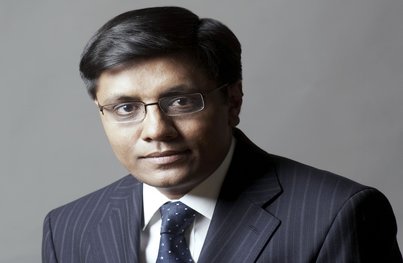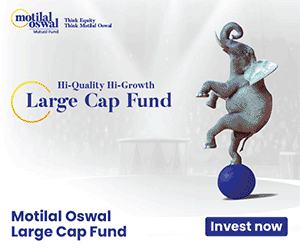We have focused on quality companies which have delivered earnings growth in a difficult environment
BFSI Industry Interview

Mr. Neelesh Surana has been re-designated as the CIO - Equity at Mirae Asset Global Investments (India) Pvt. Ltd. He joined Mirae Asset in 2008. In his capacity as CIO - Equity, Neelesh spearheads the equity research and investment function. He is responsible for the managing existing equity funds of Mirae Asset (India), as well as, providing research support for the global mandate. Prior to this, Neelesh served as the Head – Equity of the AMC. An engineering graduate with MBA in Finance, Neelesh has over 19 years of experience in equity research and portfolio management. Prior to Mirae, Neelesh was with ASK Investment Managers Ltd., as Senior Portfolio Manager responsible for managing domestic, and international portfolios.
In an interview with Advisorkhoj, Mr. Surana discussed the various local and global factors and his take on investing in Indian equities. His advice to long term retail investors with about 3-5 year time frame is that they should make judicious allocation across categories. He recommends about 25-30% allocation in midcaps, and remaining in Multi-cap funds.
At the outset, accept our heartiest congratulations for completion of 6 years of terrific performance of Mirae Asset Emerging Bluechip Fund. May we ask what the reasons behind this successful journey are?
Disciplined approach to investing, with focus on quality up to a reasonable price along with diversification, has helped us deliver satisfactory returns. Overall, alpha was generated by being in the right pockets as divergence was significant, both across sectors, as well as stocks within a sector. As a sectoral level, we have focused on quality companies which have delivered earnings growth in a difficult environment.
Over the past year or so, we have seen midcap outperforming large cap. Do you expect this trend to continue over the next 2 – 3 years? Both your popular funds, Mirae Asset Emerging Bluechip and Mirae Asset India Opportunities Fund have done exceedingly well in the last three years. What will be your advice to our readers looking to invest in equities with three year investment horizon, with respect to market cap categories?
Long term investors with about 3-5 year time frame should make judicious allocation across categories. We would recommend about 25-30% allocation in midcaps, and remaining in Multi-cap funds.
Brexit did not seem to have major impact on Indian equity market, with the Nifty holding above 8,000. Have we seen the worst of Brexit as far as our market in concerned? What is the longer term implication of this event on Indian equities?
Direct implication is limited to few corporates exposed to business in Britain. That aside, it would have an impact on global growth and interest rates hikes which could be pushed for some time.
Do you see the Reserve Bank making more rate cuts this fiscal year? If yes, what is the quantum of cuts that you expect this year?
There are both positive and negative factors impacting rates. Global yields have declined since the UK referendum, reflecting weak global growth prospects and potential of further policy support from central banks worldwide. LAF liquidity turning surplus in the first week of July is yet another factor which has likely improved bond market sentiments. On the other hand, fundamentals related to fiscal dynamic are not so comfortable. The direction of inflation and fiscal dynamics will determine course of interest rates. We are expecting about 25bp reduction over the medium term.
What are the major global risks other than Brexit and US Fed actions that our equity market may face in the coming months?
The long term concern pertains to low growth, despite significant monetary stimulus and low interest rates.
Hopefully, we will have good monsoon this year. Please talk a little bit about the effect of good monsoon on the Indian equity market, especially industry sectors that are likely to benefit from good monsoon.
Monsoon would add to recovery in the Indian economy which is on the right track towards given the significant improvement in macros like current account deficit, inflation, and interest rates, etc. Favourable Monsoon, along with increase in wages from the seventh pay commission, would help improve the consumption side of the economy. We would not look only at Monsoon while selecting companies – we prefer companies which have maximum overplay of benefit arising from recovery, consumption, reforms like GST, etc.
Are there any near term risks of inflation creeping up again, good monsoon notwithstanding? What is your outlook on crude oil and other commodity prices?
Most experts do not expect hike in oil prices. As long as oil is below 60$, we are comfortably placed, particularly post the oil sector reforms.
The 2015 – 2016 Q4 results showed some good signs relative to the previous quarters. Do you see an earnings recovery around the corner? When do you the see the capex cycle reviving in the economy?
We do not see private sector capex to pick up in the short term, given the low utilisation levels. However, we would expect private capex to pick up from FY18, owing to the crowding out effect of investment by government, and increase in consumption.
Let us discuss the most talked about sector over the past year or so. In your view, have we seen the worst of the NPA and earnings issues with the banks, especially public sector banks?
The worst of incremental NPA creation is over. A large part of stress (about 80%) of NPA stress is already recognised by the banks and will be reflected over next few quarters. We have generally avoided public sector bankS, except the sector leader in this space given that it is better placed in terms of retail franchise, ability to handle stress, margin profile, etc.
In the current market and economic environment, is your portfolio construction approach, top down or bottom up? If top down, which sectors do you like in the current environment with a three year investment horizon?
It is a combination of both “top-down” and “bottom-up” approach. The focus however, is more on the stock selection which is driven by a bottom-up approach. The industry selection is done through top down approach which is mainly based on growth prospects. Thereafter, the decision to include a stock is essentially driven by the individual traits of the company which include analysis of its business model, understanding management bandwidth and review of valuation.
Finally, we would like to get your views on growth versus value style of investing. Different fund managers have different views on this. As an AMC, do you have preference either ways?
I would say that “Growth” has to be subset of “Value”. Essentially, we look for growth oriented businesses - however; the same has to be upto a reasonable valuation. Paying high valuation is also one of the risks and one has to be careful to not to overpay for high growth- high quality business.
Recent Interviews
-
Partner Connect by Advisorkhoj with Mr Ajay Sehgal from Allegiance Financial
Jan 13, 2026
-
In conversation with Mr Pratik Oswal Chief of Passive Business of Motilal Oswal MF
Jan 6, 2026
-
In conversation with Mr Nilesh Jethani Fund Manager Equity with Bank of India Mutual Fund
Jan 6, 2026
-
Partner Connect by Advisorkhoj with Mr Amit Kalra Glorious Path Pvt Ltd New Delhi
Dec 5, 2025
-
Partner Connect by Advisorkhoj with Mr Alok Dubey PrimeWealth Pune
Dec 1, 2025
Fund News
-
WhiteOak Capital Mutual Fund launches WhiteOak Capital Consumption Opportunities Fund
Jan 20, 2026 by Advisorkhoj Team
-
Shriram Mutual Fund launches Shriram Money Market Fund
Jan 19, 2026 by Advisorkhoj Team
-
PPFAS Mutual Fund launches Parag Parikh Large Cap Fund
Jan 19, 2026 by Advisorkhoj Team
-
Kotak Mahindra Mutual Fund launches Kotak Nifty200 Value 30 Index Fund
Jan 15, 2026 by Advisorkhoj Team
-
Bandhan Mutual Fund launches Bandhan Silver ETF FOF
Jan 12, 2026 by Advisorkhoj Team





